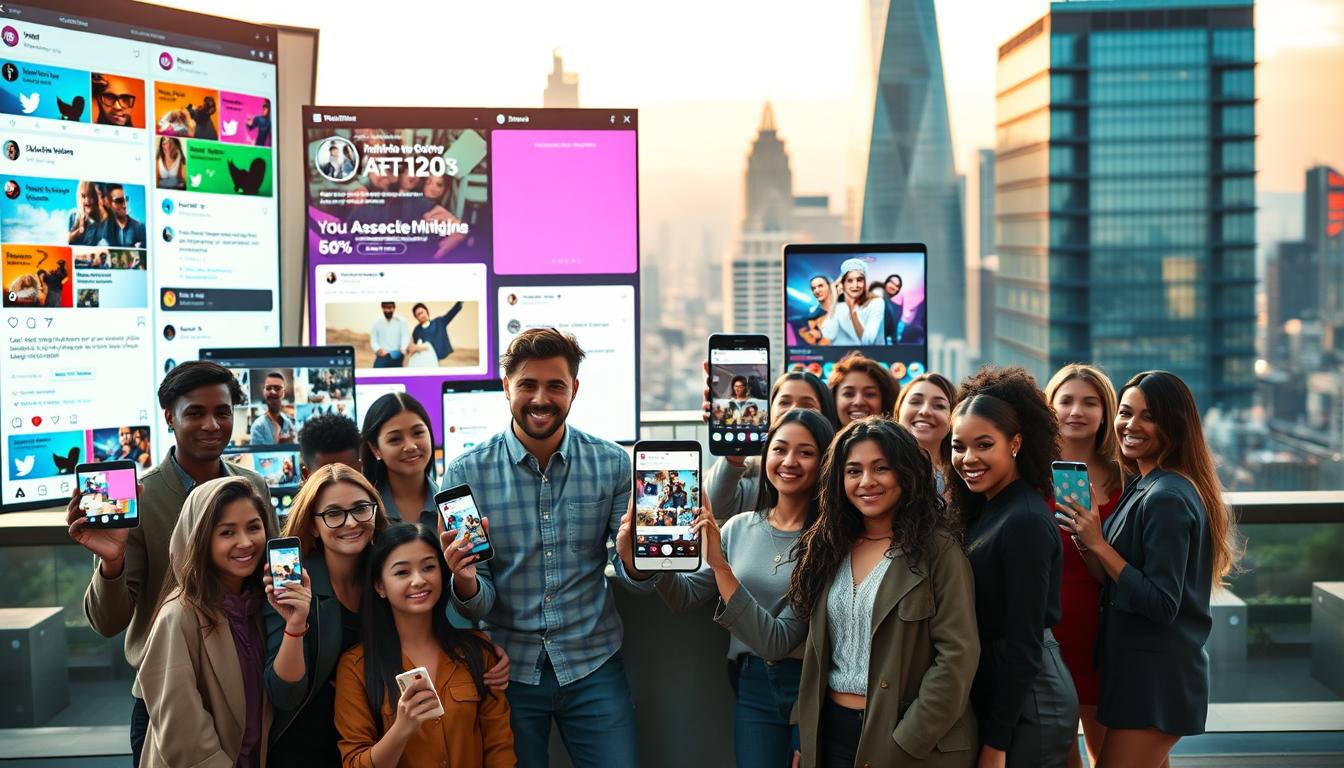What if your next influencer marketing campaign could turn social media followers into loyal customers overnight?
We look at how brands use influencer marketing to stand out. They team up with influencers in fashion and fitness, turning them into brand supporters.
See how big names like Nike and Glossier work with micro-influencers. They focus on real engagement, not just views. This shows why influencer marketing beats traditional ads online.
These seven examples show you how to use influencer marketing. You’ll learn about creating content and targeting specific markets. Each campaign shows how the right partnership can increase visibility and sales quickly.
Influencer Collaboration Success Stories
Real-world examples show how influencer marketing boosts growth. Let’s look at campaigns that turned partnerships into wins.
- Gymshark teamed up with fitness influencers to show off their gear. Their Instagram campaigns raised sales by 40% in a year.
- ASOS partnered with micro-influencers on TikTok, boosting engagement by 65%. This strategy helped them reach specific groups without spending a lot.
- Skittles worked with beauty influencers to launch a special product. This led to a 30% increase in user-generated content, growing their reach naturally.
These stories show the power of matching influencers’ authenticity with brand goals. Each campaign focused on building trust with the audience, not just on numbers. Brands that choose the right creators see real gains in loyalty and sales.
Building an Effective influencer marketing campaign
Creating a successful campaign starts with clear planning. Here’s how to structure your strategy step by step:
- Set measurable goals: Define objectives like brand awareness or sales uplift. Align these with your broader marketing aims.
- Select the right influencers: Use platforms like Instagram or TikTok to identify micro or macro influencers. Their audience should match your target demographic. Tools like Hootsuite or Upfluence make this easier.
- Create clear guidelines: Share brand messaging, tone, and creative briefs. Allow influencers flexibility to maintain authenticity.
- Track performance: Monitor engagement rates, click-throughs, and conversions using UTM parameters or platform analytics.
- Optimise continuously: Adjust campaigns based on real-time data. Reward top-performing influencers to foster long-term partnerships.
Regular communication ensures alignment with influencers. Use platforms like Asana or Slack for updates. Always analyse post-campaign metrics to refine future strategies. By focusing on audience fit and transparency, you build trust and drive measurable results.
Conclusion
A good influencer marketing strategy is key to success in today’s digital world. The examples and steps given show how working with real, audience-focused partnerships can help brands get noticed and gain trust. By being open and setting clear goals, brands can make influencers spread their messages in a way that feels true.
To really make a difference, keep updating your plan to match new trends but hold onto your core values. Sites like TikTok and Instagram offer lots of chances, but success comes from making choices based on data and being ready to change. Whether you’re aiming at a specific group or a wider audience, staying focused is important. As things change, staying up to date and improving your approach will help your brand grow and keep people interested over time.
FAQ
What is influencer marketing?
Influencer marketing is a way for brands to work with influencers. These are people who have a big following on social media. They help promote products or services by sharing them with their followers.
How do we select the right influencers for our campaign?
Choosing the right influencers means finding people who match our brand values. They should also connect with our target audience. We look at their engagement rates, audience details, and past campaign results to pick the best ones.
What are some successful examples of influencer marketing campaigns?
Many brands have seen great success with influencer marketing. For example, Daniel Wellington grew its brand by teaming up with lifestyle influencers. These partnerships helped increase engagement and sales, proving the strategy’s effectiveness.
How can we measure the success of our influencer marketing campaign?
We can track success by looking at engagement rates, reach, website visits, and sales. Using tools like Google Analytics and social media insights helps us see how well our campaigns are doing. This way, we can improve them for the future.
What is the importance of an influencer marketing strategy?
Having a solid influencer marketing strategy is key. It helps us plan and run our campaigns well. It ensures our goals are met and we choose the right influencers. This way, we get the best results for our money.
How do we ensure compliance with advertising regulations when working with influencers?
To follow the rules, we teach influencers about advertising laws. They need to clearly say when they’re promoting something. Following rules from bodies like the Advertising Standards Authority keeps our brand safe and honest with our audience.










